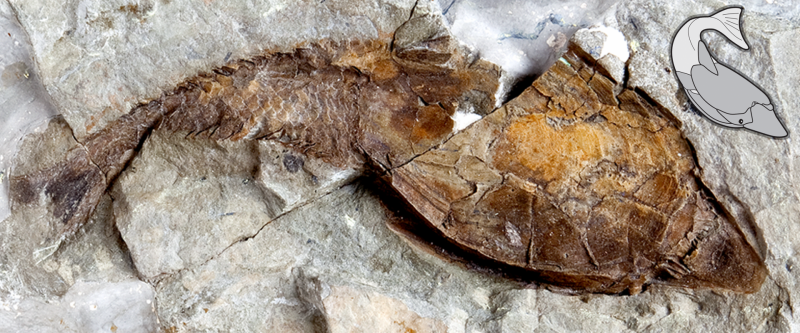On the origins of bone.. And much more.
2018 has been a good year so far for ICAL members, who have published more than thirty papers since January. These feature ancient spiders, some of the first ancestors of insects, spiders and millipedes, baby birds, ape locomotion, and new insights into the origin of bone in vertebrates.

This year has seen members of the Interdisciplinary Centre for Ancient Life publish on a broad range of topics. Highlights, with links to further information about each, are listed below;
Knoll, F., Chiappe, L.M., Sanchez, S., Garwood, R.J., Edwards, N.P., Wogelius, R.A., Sellers, W.I., Manning, P.L., Ortega, F., Serrano, F.J., Marugán-Lobón, J., Cuesta, E., Escaso, F., and Sanz, J.L. 2018. A diminutive perinate European Enantiornithes reveals an asynchronous ossification pattern in early birds. Nature Communications, 9 (1): . doi: 10.1038/s41467-018-03295-9. [More information]
Massare, J.A., and Lomax, D.R. 2018. Hindfins of Ichthyosaurus: effects of large sample size on ‘distinct’ morphological characters. Geological Magazine. doi: 10.1017/S0016756818000146. [More information]
Nabawy, M.R.A., Sivalingam, G., Garwood, R.J., Crowther, W.J., and Sellers, W.I. 2018. Energy and time optimal trajectories in exploratory jumps of the spider Phidippus regius. Scientific Reports, 8 (1): 7142. doi: 10.1038/s41598-018-25227-9. [More information]
Sellers, W.I., and Hirasaki, E. 2018. Quadrupedal locomotor simulation: producing more realistic gaits using dual-objective optimization. Royal Society Open Science, 5 (3): 171836. doi: 10.1098/rsos.171836. [More information]
Wang, B., Dunlop, J.A., Selden, P.A., Garwood, R.J., Shear, W.A., Müller, P., and Lei, X. 2018. Cretaceous arachnid Chimerarachne yingi gen. et sp. nov. illuminates spider origins. Nature Ecology & Evolution,: . doi: 10.1038/s41559-017-0449-3. [More information]
Yang, J., Ortega-Hernández, J., Legg, D.A., Lan, T., Hou, J., and Zhang, X. 2018. Early Cambrian fuxianhuiids from China reveal origin of the gnathobasic protopodite in euarthropods. Nature Communications, 9 (1): 470. doi: 10.1038/s41467-017-02754-z. [More information]
Details of these - and many more recently published papers - are included on our Publications page. Our new Study page features details of not just PhDs on offer, but a number projects available under our new MPhil programme. It also includes some information regarding a brand new Palaeobiology pathway - a specialisation in our Earth and Planetary Science (BSc and MEarthSci) undergraduate degree. You can find more information on these options on this site, and on the SEES website - and you are, of course, always welcome to email us with questions. We'll sign off now with details of pne of the latest papers from the group:
Keating, J.N., Marquart, C.L., Marone, F., and Donoghue, P.C.J. 2018. The nature of aspidin and the evolutionary origin of bone. Nature Ecology & Evolution. doi: 10.1038/s41559-018-0624-1. [More information]
This paper looks deep into the origins of the vertebrates and their unique support system - bone. Living vertebrates have skeletons built from four different tissue types: bone and cartilage (the main tissues that human skeletons are made from), and dentine and enamel (the tissues from which our teeth are constructed). These tissues are unique because they become mineralised as they develop, giving the skeleton strength and rigidity.
Evidence for the early evolution of our skeletons can be found in a group of fossil fishes called heterostracans, which lived over 400 million years ago. These fishes include some of the oldest vertebrates with a mineralised skeleton that have ever been discovered. Exactly what tissue heterostracan skeletons were made from has long puzzled scientists.
Now a team of researchers from The University of Manchester, the University of Bristol and the Paul Scherrer Institute in Switzerland have taken a detailed look inside heterostracan skeletons using Synchrotron Tomography: a special type of CT scanning using very high energy X-rays produced by a particle accelerator. Using this technique, the team have identified this mystery tissue... Read on if you would like to know more.


